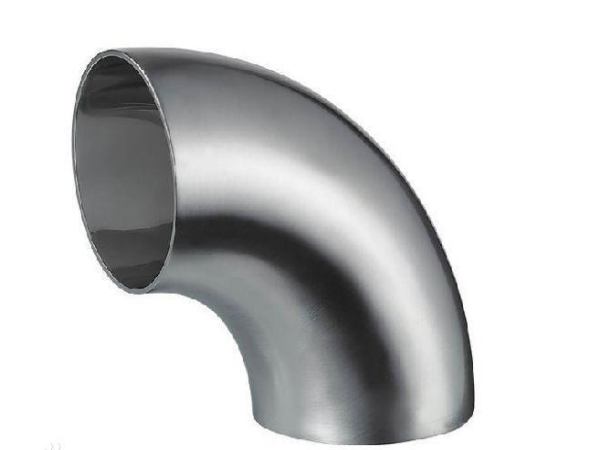In piping systems,
seamless elbows are pipe fittings that change the direction of the piping. According to the angle, there are three most commonly used ones: 45° and 90°180°, and other abnormal angle elbows such as 60° are also included according to engineering needs. Elbow materials include cast iron, stainless steel, alloy steel, malleable cast iron, carbon steel, non-ferrous metals and plastics.
The ways to connect with the pipe are: direct welding (the most common way)
flange connection, hot-melt connection, electric fusion connection, thread connection and socket connection, etc. According to the production process, it can be divided into: welding elbow, stamping elbow, push elbow, casting elbow, butt welding elbow, etc. Other names: 90-degree elbow, right-angle bend, etc.

Product introduction
Elbow is a commonly used connecting pipe fitting in plumbing installation. It is used for the connection at the corner of the pipeline and is used to change the direction of the pipeline.
Other names: 90° elbow, right-angle elbow, love and bend, stamping elbow, pressing elbow, mechanism elbow, welding elbow, etc.
Purpose: To connect two pipes with the same or different nominal diameters, so that the pipes can make turns of 90°, 45°, 180° and various degrees.
Bending radius less than or equal to 1.5 times the pipe diameter belongs to the elbow, and greater than 1.5 times the pipe diameter belongs to the elbow.
Product Usage
A pipe fitting commonly used in pipeline installation, which connects two pipes with the same or different nominal diameters, so that the pipes can be turned at a certain angle, and the nominal pressure is 1-1.6Mpa.
Skills requirement
1. Since most of the pipe fittings are used for welding, in order to improve the welding quality, the ends are beveled, leaving a certain angle and a certain side. This requirement is also relatively strict, such as how thick the side is, how much the angle is and the deviation The scope is specified. The surface quality and mechanical properties are basically the same as the pipe. For the convenience of welding, the steel grade of the pipe fittings and the pipes to be connected is the same.
2. All pipe fittings must undergo surface treatment, and the oxide scales on the inner and outer surfaces are sprayed off by shot blasting, and then coated with anti-corrosion paint. This is for export needs, and moreover, domestically, it is also for the convenience of transportation to prevent rust and oxidation, and work in this area must be done.
3. The requirements for packaging. For small pipe fittings, such as export, wooden boxes are required, about 1 cubic meter. It is stipulated that the number of elbows in this box should not exceed one ton. This standard allows packages, that is, large sets of small, But the total weight generally cannot exceed 1 ton. For large pieces y, they must be packaged individually, such as 24″, they must be packaged individually. In addition, there are packaging marks, which must indicate the size, steel number, batch number, manufacturer’s trademark, etc.
Classification
Divided by material
Carbon Steel: ASTM/ASME A234 WPB, WPC
Alloys: ASTM/ASME A234 WP 1-WP 12-WP 11-WP 22-WP 5-WP 91-WP911, 15Mo3 15CrMoV, 35CrMoV
Stainless steel: ASTM/ASME A403 WP 304-304L-304H-304LN-304N
ASTM/ASME A403 WP 316-316L-316H-316LN-316N-316Ti
ASTM/ASME A403 WP 321-321H ASTM/ASME A403 WP 347-347H
Low temperature steel: ASTM/ASME A402 WPL3-WPL 6
High performance steel: ASTM/ASME A860 WPHY 42-46-52-60-65-70
Cast steel, alloy steel, stainless steel, copper, aluminum alloy, plastic, argon, PVC, PPR, RFPP (reinforced polypropylene), etc.
According to the production method, it can be divided into push system, pressing, forging, casting and so on.
According to the manufacturing standard, it can be divided into national standard, electric standard, ship standard, chemical standard, water standard, American standard, German standard, Japanese standard, Russian standard and so on.
According to its radius of curvature: it can be divided into long radius elbow and short radius elbow. A long radius elbow means that its radius of curvature is equal to 1.5 times the outer diameter of the pipe, that is, R=1.5D; a short radius elbow means that its radius of curvature is equal to the outer diameter of the pipe, that is, R=1.0D. (D is the diameter of the elbow, R is the radius of curvature).
According to the pressure level: there are about seventeen kinds, which are the same as the American pipe standards, including: Sch5s, Sch10s, Sch10, Sch20, Sch30, Sch40s, STD, Sch40, Sch60, Sch80s, XS; Sch80, SCH100, Sch120, Sch140, Sch160, XXS; STD and XS are the most commonly used.
According to different shapes and uses, it can be divided into: grooved elbow, ferrule elbow, double bearing elbow, flange elbow, different diameter elbow, seat elbow, inner and outer tooth elbow, stamping elbow, push elbow Elbows, socket elbows, butt welding elbows, inner wire elbows, etc.
General Classification
Flexible elbow, ferrule elbow, edge elbow, quick fitting elbow, seat elbow, flange elbow, 180° elbow, double socket elbow, single socket elbow, socket elbow head, reducing elbow, seamless elbow, butt welding elbow, 90° elbow, 45° elbow, combined tee internal thread elbow, stamping elbow, push elbow, high pressure elbow, wear-resistant Elbows, mechanical elbows, flanged elbows, grooved elbows, three-dimensional elbows, external threaded elbows, threaded elbows, special elbows, and waterproof elbows.













 Eastern Steel Manufacturing Co.,Ltd not only improve product production and sales services, but also provide additional value-added services. As long as you need, we can complete your specific needs together.
Eastern Steel Manufacturing Co.,Ltd not only improve product production and sales services, but also provide additional value-added services. As long as you need, we can complete your specific needs together.










